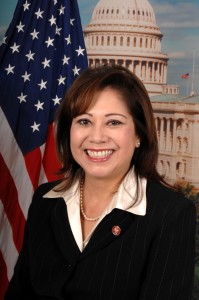
Unemployment Rate Rose To 9.2% in June
Nonfarm payroll employment was essentially unchanged in June (+18,000), and the unemployment rate was little changed at 9.2%, the US Bureau of Labor Statistics reported recently. Employment in most major private-sector industries changed little over the month. Government employment continued to trend down.
Household Survey Data
The number of unemployed persons (14.1 million) and the unemployment rate (9.2%) were essentially unchanged over the month. Since March, the number of unemployed persons has increased by 545,000, and the unemployment rate has risen by 0.4 percentage points. The labor force, at 153.4 million, changed little over the month.
Among the major worker groups, the unemployment rates for adult men (9.1%), adult women (8.0%), teenagers (24.5%), whites (8.1%), blacks (16.2%), and Hispanics (11.6 percent) showed little or no change in June. The jobless rate for Asians was 6.8%, not seasonally adjusted.
The number of persons unemployed for less than 5 weeks increased by 412,000 in June. The number of long-term unemployed (those jobless for 27 weeks and over) was essentially unchanged over the month, at 6.3 million, and accounted for 44.4% of the unemployed.
The civilian labor force participation rate was little changed in June at 64.1%. The employment-population ratio decreased by 0.2 percentage point to 58.2%.
The number of persons employed part time for economic reasons (sometimes referred to as involuntary part-time workers) was essentially unchanged in June at 8.6 million. These individuals were working part time because their hours had been cut back or because they were unable to find a full-time job.
In June, 2.7 million persons were marginally attached to the labor force, about the same as a year earlier. (These data are not seasonally adjusted.) These individuals were not in the labor force, wanted and were available for work, and had looked for a job sometime in the prior 12 months. They were not counted as unemployed because they had not searched for work in the 4 weeks preceding the survey.
Among the marginally attached, there were 982,000 discouraged workers in June, down by 225,000 from a year earlier. (These data are not seasonally adjusted.) Discouraged workers are persons not currently looking for work because they believe no jobs are available for them. The remaining 1.7 million persons marginally attached to the labor force in June had not searched for work in the 4 weeks preceding the survey for reasons such as school attendance or family responsibilities.
Establishment Survey Data
Total nonfarm payroll employment was essentially unchanged in June (+18,000). Following gains averaging 215,000 per month from February through April, employment has been essentially flat for the past 2 months. Employment in most major private-sector industries changed little in June, while government employment continued to trend down.
Within professional and business services, employment in professional and technical services increased in June (+24,000). This industry has added 245,000 jobs since a recent low in March 2010. Employment in temporary help services changed little over the month and has shown little movement on net so far this year.
Health care employment continued to trend up in June (+14,000), with the largest gain in ambulatory health care services. Over the prior 12 months, health care had added an average of 24,000 jobs per month.
In June, employment in mining rose by 8,000, with most of the gain occurring in support activities for mining. Employment in mining has increased by 128,000 since a recent low in October 2009.
Employment in leisure and hospitality edged up (+34,000) in June and has grown by 279,000 since a recent low in January 2010.
Employment in government continued to trend down over the month (-39,000). Federal employment declined by 14,000 in June. Employment in both state government and local government continued to trend down over the month and has been falling since the second half of 2008.
Manufacturing employment changed little in June. Following gains totaling 164,000 between November 2010 and April 2011, employment in this industry has been flat for the past 2 months. In June, job gains in fabricated metal products (+8,000) were partially offset by a loss in wood products (-5,000).
Construction employment was essentially unchanged in June. After having fallen sharply during the 2007-09 period, employment in construction has shown little movement on net since early 2010.
The average workweek for all employees on private nonfarm payrolls decreased by 0.1 hour to 34.3 hours in June. The manufacturing workweek for all employees decreased by 0.3 hour to 40.3 hours over the month; factory overtime edged down by 0.1 hour to 3.1 hours. The average workweek for production and nonsupervisory employees on private nonfarm payrolls remained at 33.6 hours in June.
In June, average hourly earnings for all employees on private nonfarm payrolls decreased by 1 cent to $22.99. Over the past 12 months, average hourly earnings have increased by 1.9%. In June, average hourly earnings of private-sector production and nonsupervisory employees declined by 1 cent to $19.41.
The change in total nonfarm payroll employment for April was revised from +232,000 to +217,000, and the change for May was revised from +54,000 to +25,000.












Vision Payroll